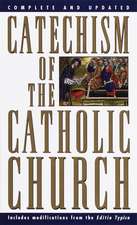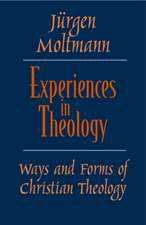The Culture of Fengshui in Korea: AsiaWorld
Autor Hong-Key Yoonen Limba Engleză Paperback – 5 mai 2008
| Toate formatele și edițiile | Preț | Express |
|---|---|---|
| Paperback (1) | 506.56 lei 6-8 săpt. | |
| Rowman & Littlefield – 5 mai 2008 | 506.56 lei 6-8 săpt. | |
| Hardback (1) | 775.51 lei 6-8 săpt. | |
| Rowman & Littlefield – 12 noi 2006 | 775.51 lei 6-8 săpt. |
Din seria AsiaWorld
-
 Preț: 373.30 lei
Preț: 373.30 lei - 23%
 Preț: 699.04 lei
Preț: 699.04 lei -
 Preț: 450.47 lei
Preț: 450.47 lei -
 Preț: 412.29 lei
Preț: 412.29 lei -
 Preț: 396.27 lei
Preț: 396.27 lei - 23%
 Preț: 697.70 lei
Preț: 697.70 lei - 27%
 Preț: 709.49 lei
Preț: 709.49 lei - 27%
 Preț: 708.06 lei
Preț: 708.06 lei -
 Preț: 447.57 lei
Preț: 447.57 lei - 23%
 Preț: 624.27 lei
Preț: 624.27 lei - 27%
 Preț: 716.97 lei
Preț: 716.97 lei - 27%
 Preț: 734.99 lei
Preț: 734.99 lei - 27%
 Preț: 736.42 lei
Preț: 736.42 lei -
 Preț: 413.95 lei
Preț: 413.95 lei - 27%
 Preț: 716.97 lei
Preț: 716.97 lei - 27%
 Preț: 788.11 lei
Preț: 788.11 lei -
 Preț: 348.89 lei
Preț: 348.89 lei - 27%
 Preț: 717.26 lei
Preț: 717.26 lei -
 Preț: 432.81 lei
Preț: 432.81 lei - 27%
 Preț: 718.37 lei
Preț: 718.37 lei - 27%
 Preț: 976.46 lei
Preț: 976.46 lei - 27%
 Preț: 817.70 lei
Preț: 817.70 lei -
 Preț: 450.47 lei
Preț: 450.47 lei - 27%
 Preț: 793.05 lei
Preț: 793.05 lei - 27%
 Preț: 683.22 lei
Preț: 683.22 lei -
 Preț: 397.88 lei
Preț: 397.88 lei
Preț: 506.56 lei
Nou
Puncte Express: 760
Preț estimativ în valută:
96.93€ • 101.41$ • 80.52£
96.93€ • 101.41$ • 80.52£
Carte tipărită la comandă
Livrare economică 02-16 aprilie
Preluare comenzi: 021 569.72.76
Specificații
ISBN-13: 9780739113493
ISBN-10: 0739113496
Pagini: 350
Dimensiuni: 152 x 229 x 20 mm
Greutate: 0.51 kg
Editura: Rowman & Littlefield
Seria AsiaWorld
ISBN-10: 0739113496
Pagini: 350
Dimensiuni: 152 x 229 x 20 mm
Greutate: 0.51 kg
Editura: Rowman & Littlefield
Seria AsiaWorld
Notă biografică
Descriere
Descriere de la o altă ediție sau format:
Explores the nature of geomantic principles (fengshui) and the culture of practicing them in Korean cultural contexts. This book analyzes the nature and historical background of geomancy, the principles for selecting auspicious sites, and provides an interpretation of geomantic principles as practiced in Korea.
Explores the nature of geomantic principles (fengshui) and the culture of practicing them in Korean cultural contexts. This book analyzes the nature and historical background of geomancy, the principles for selecting auspicious sites, and provides an interpretation of geomantic principles as practiced in Korea.











